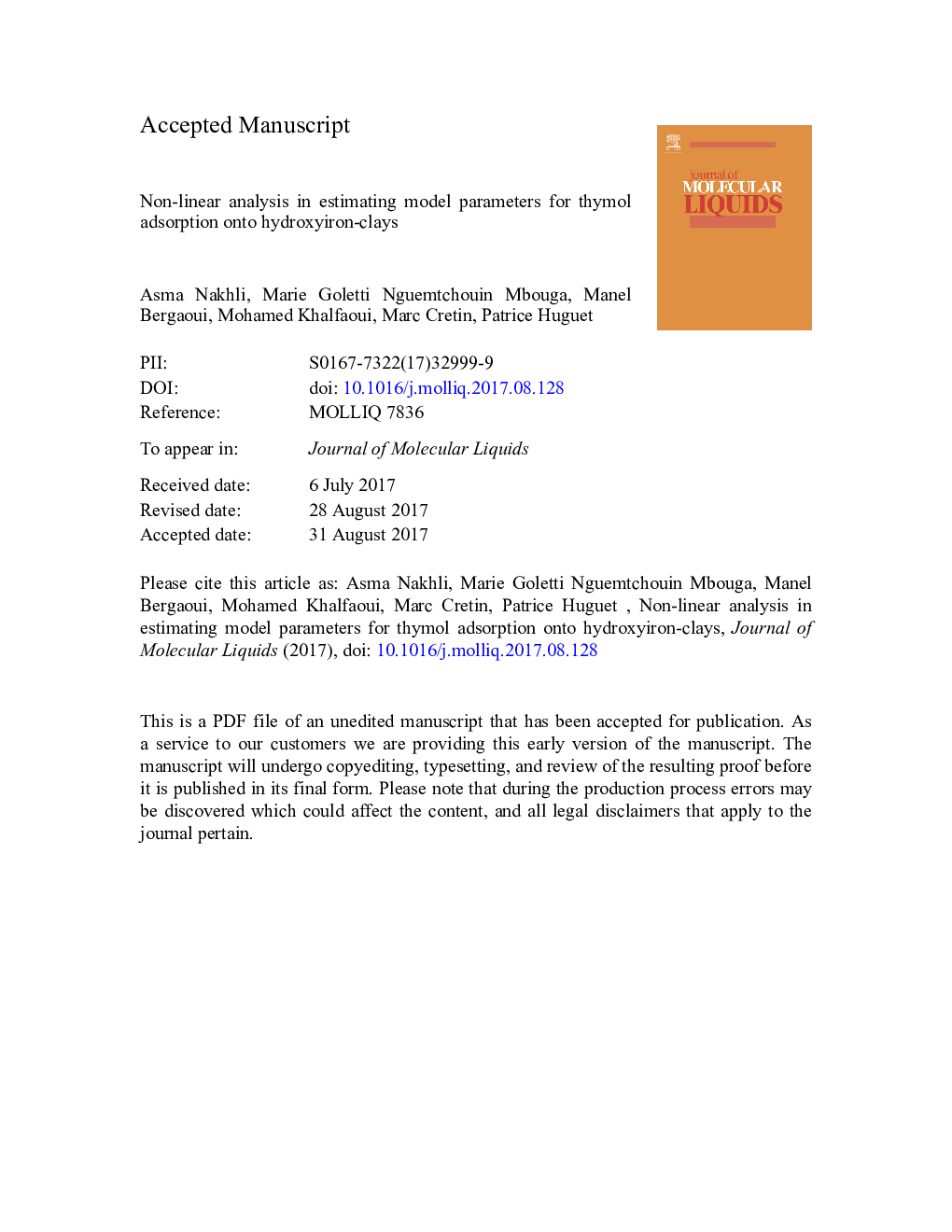| Article ID | Journal | Published Year | Pages | File Type |
|---|---|---|---|---|
| 5408247 | Journal of Molecular Liquids | 2017 | 40 Pages |
Abstract
A thorough understanding of the adsorption behaviors of thymol onto clays (montmorillonite and kaolinite) is important and significant for the potential application of clay samples as adsorbent in pesticide formulation. Materials were characterized by several physicochemical techniques including X-ray diffraction (XRD), thermal gravimetric and differential analysis (TGA, TDA), Fourier transformed infrared spectroscopy (FTIR) and nitrogen adsorption-desorption isotherms. The experimental adsorption data were analyzed using Langmuir, Freundlich and a theoretical finite multilayer with multisite occupancy models. The last theoretical model is based on a statistical physics approach, and especially on the grand canonical formalism. Error analysis showed that the finite multilayer model described well the thymol adsorption data, compared to the other models. Indeed, HYBRID error function provided the lowest sum of normalized error for all parameters model. The investigation of the physicochemical parameters involved in our theoretical model allows one to highlight all kinds of the interaction mechanisms between thymol and clays which lead us to thorough understand a such adsorption process. Furthermore, the maximum adsorbed quantities of thymol were 0.0026Â mol/g and 0.00749Â mol/g onto raw kaolinite and montmorillonite, respectively. These values increase to 0.01352Â mol/g and 0.01695Â mol/g for the same modified clays. This leads us to point out that the chemical modification of clays with iron cations has to improve the adsorption capacity, especially for montmorillonite. The evolution of some thermodynamic functions such as the configurational entropy, Gibbs and Helmholtz free enthalpies show that the adsorption of thymol is exothermic and spontaneous in nature.
Keywords
Related Topics
Physical Sciences and Engineering
Chemistry
Physical and Theoretical Chemistry
Authors
Asma Nakhli, Marie Goletti Nguemtchouin Mbouga, Manel Bergaoui, Mohamed Khalfaoui, Marc Cretin, Patrice Huguet,
